calsfoundation@cals.org
Confederate Battle Flags
Confederate battle flags were carried by soldiers to represent the Confederate States of America during the Civil War. Many of those flags possessed unique designs incorporating regimental designation numbers. There were basically five pattern types: the Stars and Bars, the Second National, the St. Andrew’s Cross, the Hardee design, and the Van Dorn design.
The Stars and Bars
The Stars and Bars, known as the First National Flag of the Confederacy, consisted of a blue canton in the upper left staff corner with a circle of seven through thirteen white stars, representing each Confederate state. The canton bordered two horizontal red bars separated by a white bar. Among the several Arkansas regiments that used this pattern were the Sixth Regiment Arkansas Volunteers, the Eighth Regiment Arkansas Infantry, and the Eleventh Regiment Arkansas Infantry. The vast majority of these first flags were made by various women’s sewing circles around the state.
The Second National Flag
On May 1, 1863, the Second National Flag was adopted by the Congress of the Confederate States at Richmond, Virginia, and later became known as the Stainless Banner. The pattern originally consisted of a white field displaying a saltire (St. Andrew’s Cross, or the letter X) as a canton in the upper left staff corner but soon became unpopular as a battle flag due to being mistaken as a flag of truce or surrender when hanging limp. The Thirty-Fifth/Twenty-Second Regiment Arkansas Infantry used a variation of this flag. This unit modified the flag by adding two parallel red bars in the field of white to avoid confusion of surrender. This rare flag was not issued to units in the Army of Trans-Mississippi and was unique in being incorporated by this Arkansas unit. The Sixth/Seventh Regiment Arkansas Infantry Consolidated and the Ninth Regiment Arkansas Infantry also carried flags of this pattern while serving in the Army of Tennessee.
The St. Andrew’s Cross
After the Battle of First Manassas, Virginia, on July 21, 1861, General P. G. T. Beauregard ordered a new design for a battle flag to avoid confusion of the Stars and Bars with the Stars and Stripes. Confederate representative William Porcher Miles of South Carolina is credited with designing this new flag, which became the most recognizable battle flag for Confederate troops. This flag was patterned after the national flag of Scotland, which consisted of a field of blue with a white saltire; however, the color of the field was changed to red with a blue saltire bordered in white. The Southern states, being a common destination for Scottish immigrants, easily accepted this design as a Confederate battle flag. Upon completion of the design, Congressman Miles stated, “The flag should be a token of humble acknowledgment of God and be a public testimony to the world that our trust is in the Lord our God.”
The earliest known engagement in which Arkansas troops carried this flag may have been the Battle of Pea Ridge on March 7, 1862, by the men of General Earl Van Dorn’s command. Other Arkansas regiments that carried this flag on the field of battle were the Third Arkansas Regiment Volunteer Infantry and Turnbull’s Thirtieth Regiment Arkansas Volunteer Infantry, though the latter’s flag consisted of a blue field bordered on all sides by white with no stars.
The Hardee Flag
The pattern of the Hardee Flag, which was similar to the Scottish Bonnie Blue flag and designed by Major General William Hardee, was very popular with Arkansas troops during the war. It consisted of a blue field with a white border enclosing a full moon image in the middle of the field and surrounded by battle honors. The troops of Arkansas’s most famous general, Major General Patrick Cleburne, used this pattern for their regimental flags. Among the Arkansas troops that carried this flag were the Sixth and Seventh Regiments Arkansas Infantry, Helena (Key’s) Artillery Battery, and the Eighth Arkansas Infantry Regiment (replacing the Stars and Bars design). It was suggested that this pattern be eliminated, due to flag standardization, but the troops who fought under it refused to do so because of the unit’s attachment to the distinctive banner.
The Van Dorn Flag
Another popular flag of the Arkansas troops was designed by Major General Earl Van Dorn. It consisted of a red field bordered in yellow or white with a white crescent moon image in the upper staff corner; the remainder of the field is studded with thirteen white stars, signifying the thirteen Southern states. Regiments that carried this flag were the Northwest Fifteenth Regiment Arkansas Volunteer Infantry, the Seventeenth Regiment Arkansas Volunteer Infantry, and the Nineteenth Regiment Arkansas Infantry.
Other Flags
Though not widely popular, the St. George’s Cross pattern was used by various Confederate troops. It consisted of a blue field with two red bars forming a Latin cross adorned with thirteen white stars within the cross. This flag was carried by the men of General Arch Dobbins’s Brigade, commonly known as the First Regiment Arkansas Cavalry.
Perhaps a unique banner carried by Arkansas troops in the war was that of Company G, Fifteenth (Josey’s) Regiment Arkansas Infantry, known also as the Phillips (County) Guards. It consisted of a white field with the seal of the state of Arkansas being the focal point and an eagle resting on top of the seal while holding the United States flag in its beak. The word “Onward” appears at the left of the seal, and “Upward” appears at the right of the seal. This flag was presented to the Phillips Guards on February 22, 1861, when there was as of yet no official Confederate flag pattern to copy.
Many of these flags are housed in the Confederate flag collection at Old State House Museum in Little Rock (Pulaski County).
For additional information:
Battle Flag Collection. Old State House Museum Online Collections. http://collections.oldstatehouse.com/collections/64/battle-flag-collection (accessed April 6, 2022).
Dedmondt, Glen. The Flags of Civil War Arkansas. Gretna, LA: Pelican Pub. Co., 2009.
Echoes of Glory: Arms and Equipment of the Confederacy. New York: Time-Life Books, 2002.
Madaus, Howard Michael, and Robert D. Needham. The Battle Flags of the Confederate Army of Tennessee. Milwaukee: Milwaukee Public Museum, 1976.
Loy Mauch
Sons of Confederate Veterans, James M. Keller Camp #648

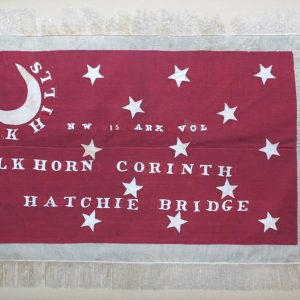 15th (NW) Arkansas Flag
15th (NW) Arkansas Flag 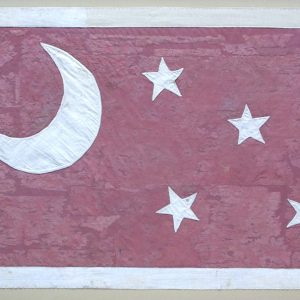 17th Infantry Flag
17th Infantry Flag 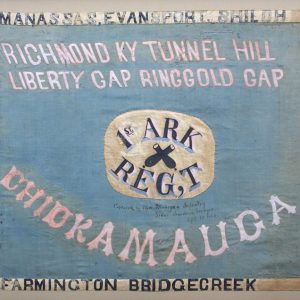 1st and 15th Infantry Regiment Flag
1st and 15th Infantry Regiment Flag 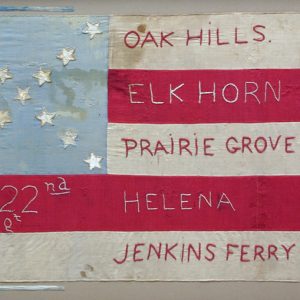 22nd/35th Arkansas Infantry (CS) Flag
22nd/35th Arkansas Infantry (CS) Flag 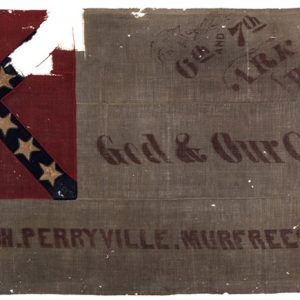 6th and 7th Infantry Regiment Flag
6th and 7th Infantry Regiment Flag 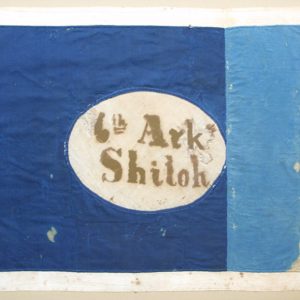 6th Infantry Flag
6th Infantry Flag 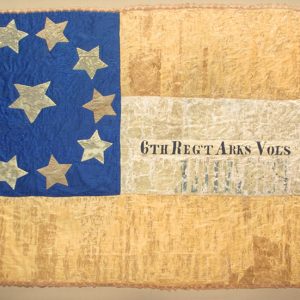 6th Volunteer Infantry Flag
6th Volunteer Infantry Flag  8th and 19th Infantry Regiment Flag
8th and 19th Infantry Regiment Flag 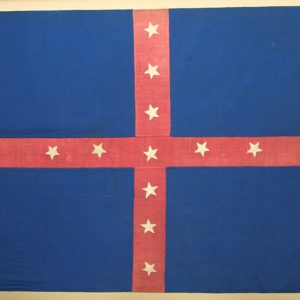 Dobbins's Cavalry Flag
Dobbins's Cavalry Flag 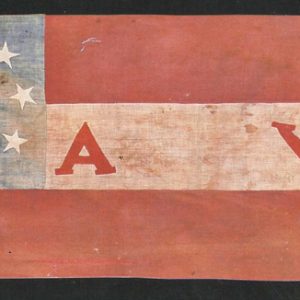 First Infantry Battle Flag
First Infantry Battle Flag 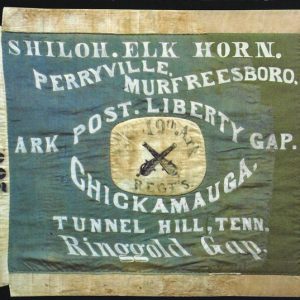 Hardee Pattern Battle Flag
Hardee Pattern Battle Flag 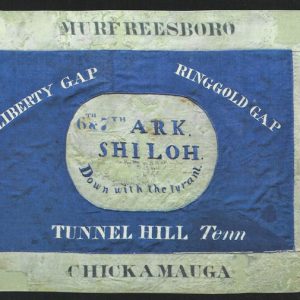 Hardee Pattern Battle Flag
Hardee Pattern Battle Flag  Hart's Battery Flag
Hart's Battery Flag  Key's Battery Flag
Key's Battery Flag  Ninth Arkansas Flag
Ninth Arkansas Flag 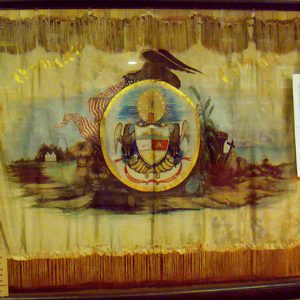 Phillips Guards Flag
Phillips Guards Flag 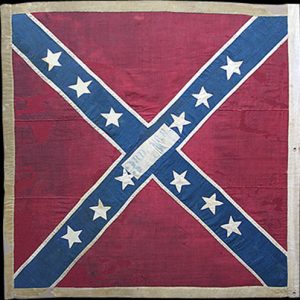 Third Arkansas Battle Flag
Third Arkansas Battle Flag  Third Confederate Infantry Flag
Third Confederate Infantry Flag 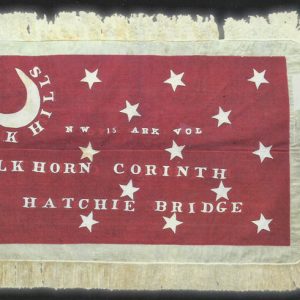 Van Dorn Pattern Battle Flag
Van Dorn Pattern Battle Flag 



Comments
No comments on this entry yet.